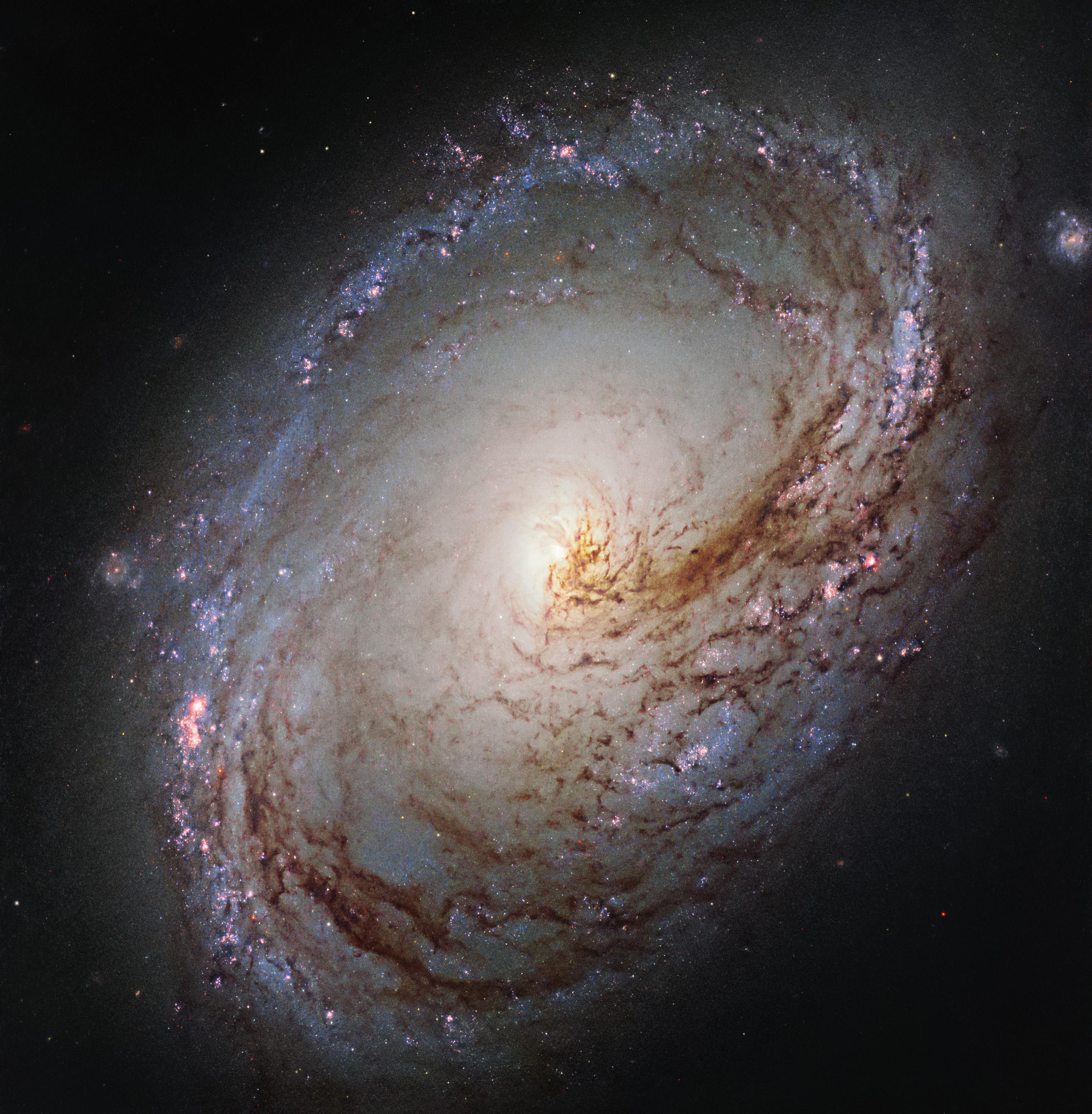
Galaxy Messier 96
This Hubble Space Telescope image shows the central region of Messier 96 (M96), a spiral galaxy of about the same mass and size as the Milky Way. The galaxy resembles a giant maelstrom of glowing gas, rippled with dark dust that swirls inward toward the nucleus. Messier 96, alternately known as NGC 3368, is a very asymmetric galaxy; its dust and gas is unevenly spread throughout its weak spiral arms, and its core is not exactly at the galactic center. Its arms are also asymmetrical, thought to have been influenced by the gravitational pull of other galaxies within the same group as Messier 96. Hubble studied Messier 96 as part of a survey of 50 nearby galaxies known as the Legacy ExtraGalactic UV Survey (LEGUS), providing an unprecedented view of star formation within the local regions of universe. For more information, visit: www.spacetelescope.org/images/potw1535a/
